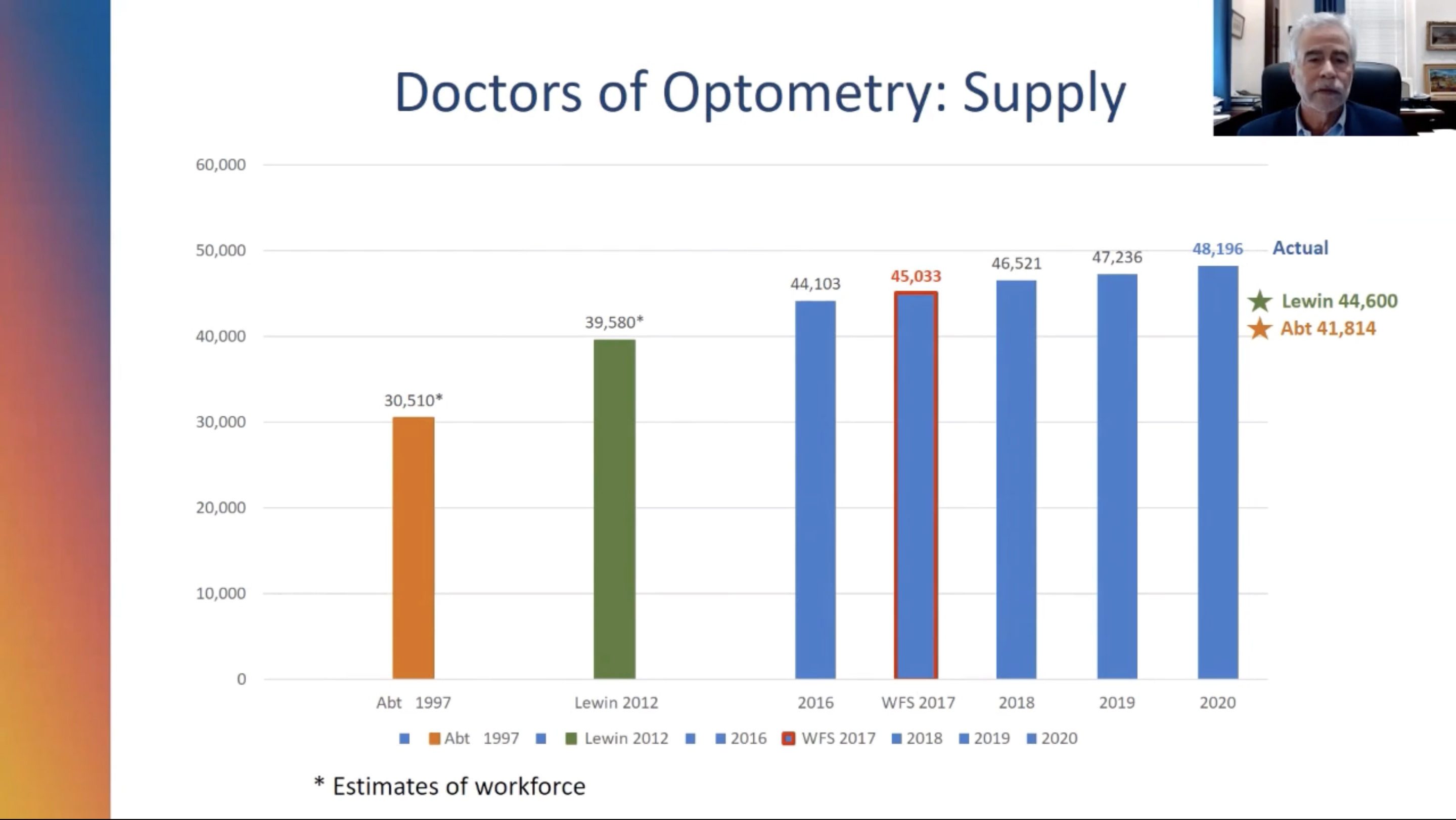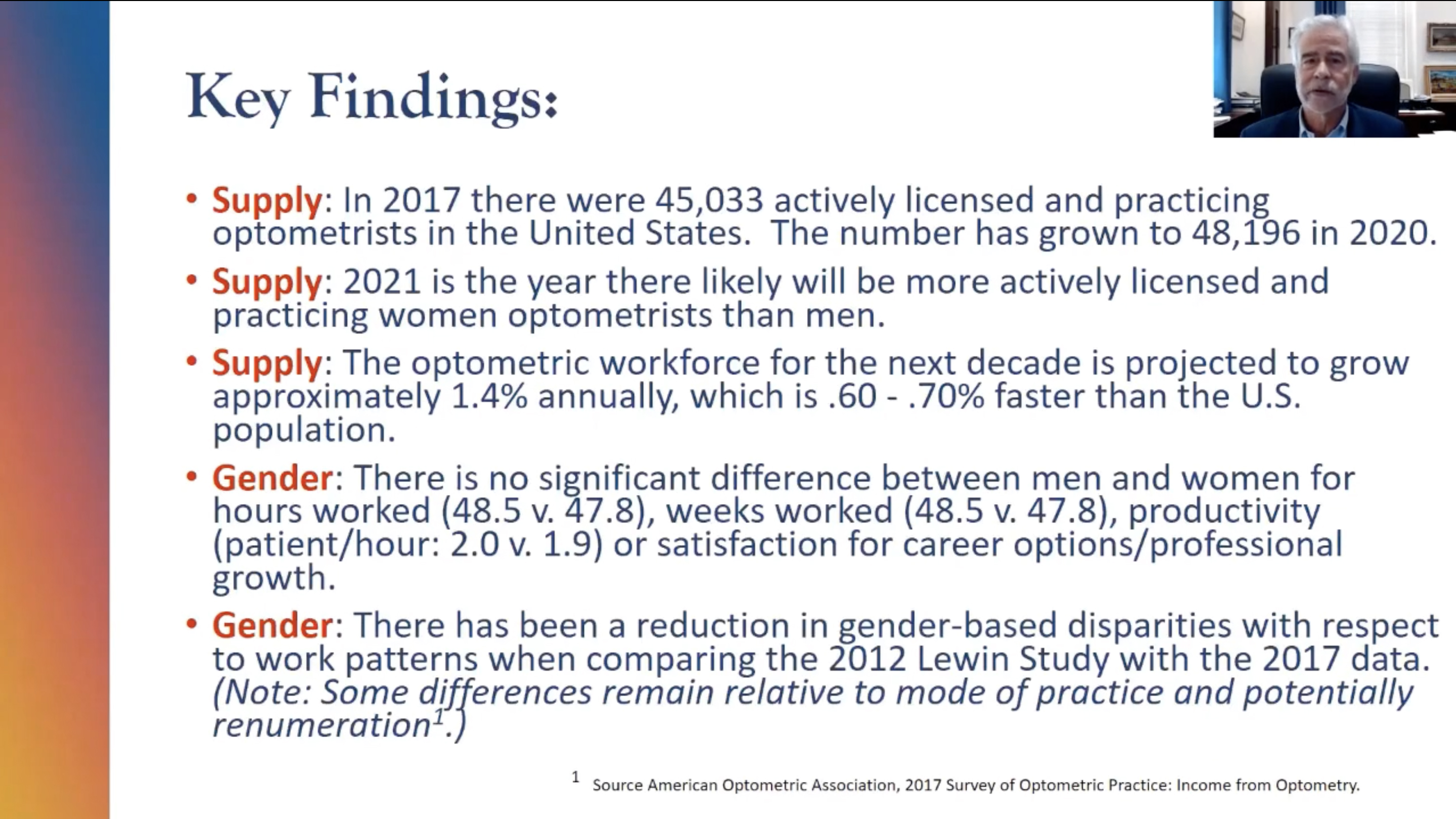Optometry will continue to grow in the United States, according to the results of a recent study presented at Academy at Home 2020. The 2017 National Optometry Workforce Survey was fielded to 4,050 optometrists to assess the current and future supply of doctors of optometry. The survey also examined in-depth trends of demographic shifts, gender-based disparities, differences in practice behaviors between self-employed and employed ODs and potential “additional patient” capacity.
The results were presented during an Academy press conference by David Heath, OD, EdM, president of the SUNY College of Optometry. “Planning for the delivery of eye care on all levels depends upon an accurate and detailed knowledge of the optometric workforce in an understanding of demographic and behavioral trends to better meet the future needs of the public,” Dr. Heath said at the beginning of his presentation.
 |
 |
| During Academy at Home 2020, Dr. Health discussed the results of the 2017 National Optometry Workforce Survey. |
From 1,158 responses, the study noted no significant differences between men and women in hours (38.9 vs. 37.5, respectively), productivity (2.0 vs 1.9 patient visits/hour) or career options/professional growth satisfaction (65% for both groups). “We’re very close to parity, and we’re expecting the inversion, with more female than mal practicing optometrists in the not so distant future,” Dr. Heath noted. “By 2021, there will likely be more actively licensed practicing women optometrists than men.”
The trends toward employed vs. self-employed was marked with 44% reporting as employed, up from 29% in 2012. In 2017, there were 45,033 actively licensed and practicing optometrists in the United State; it has grown to 48,196 in 2020. Regarding “additional patient” capacity, the data indicated a potential 2.29 to 2.57 patients/week, which could mean 5.05 million to 5.65 million additional patients annually for the profession.
The study concluded that the optometric workforce for the next decade is projected to grow about 1.4% annually, 0.6% to 0.7% faster than the US population.
Heath DA, Spangler JSS, Wingert TA, et al. 2017 National Optometry Workforce Study. Presented at Academy at Home 2020, October 7, 2020. |

